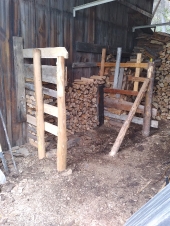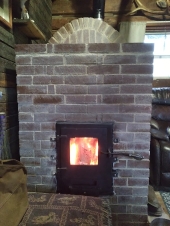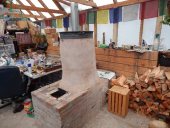

 16
16




For all your Montana Masonry Heater parts (also known as) Rocket Mass heater parts.
Visit me at
dragontechrmh.com Once you go brick you will never go back!
 14
14




 7
7




Phil Stevens wrote:For the J-tube owners playing along at home, this is why you can put in really dry sticks and they still ooze a lot of liquid out the top end as they get going...it's the steam from thermolysis moving under pressure up the sap channels in the wood.
Become extra-civilized!
 9
9











 4
4




Coydon Wallham wrote:I see that oozing liquid, but only infrequently and in specific pieces of wood. Any idea why it only happens some of the time?
 5
5




 4
4




Tommy Bolin wrote:
Along those lines. Will somebody explain to me how a "moisture meter's" little metal prongs stuck 1mm into the end grain of a length of cordwood tells me anything useful about the dryness of the center of that 22inch piece of stove wood. Those meters function similar to a pH meter, they measure electrical resistance in wood of 2 prongs about an inch apart, and infer a local value.
A build too cool to miss:Mike's GreenhouseA great example:Joseph's Garden
All the soil info you'll ever need:
Redhawk's excellent soil-building series





 3
3




Tommy Bolin wrote:You can tell how ready a piece of conifer is as soon as you start to handle it, especially the 'ring' sound dry wood makes.
Become extra-civilized!
 6
6




Trace Oswald wrote: split it, and get the reading from the center of the wood where you split it. It will give you a pretty good indication.
 5
5




Tommy Bolin wrote:
Trace Oswald wrote: split it, and get the reading from the center of the wood where you split it. It will give you a pretty good indication.
That makes far more sense than what I've heard in the past.
Fine idea, but I'll leave the meter to the kiln driers and furniture makers.
A build too cool to miss:Mike's GreenhouseA great example:Joseph's Garden
All the soil info you'll ever need:
Redhawk's excellent soil-building series






|
On top of spaghetti all covered in cheese, there was this tiny ad:
The new kickstarter is now live!
https://www.kickstarter.com/projects/paulwheaton/garden-cards
|






